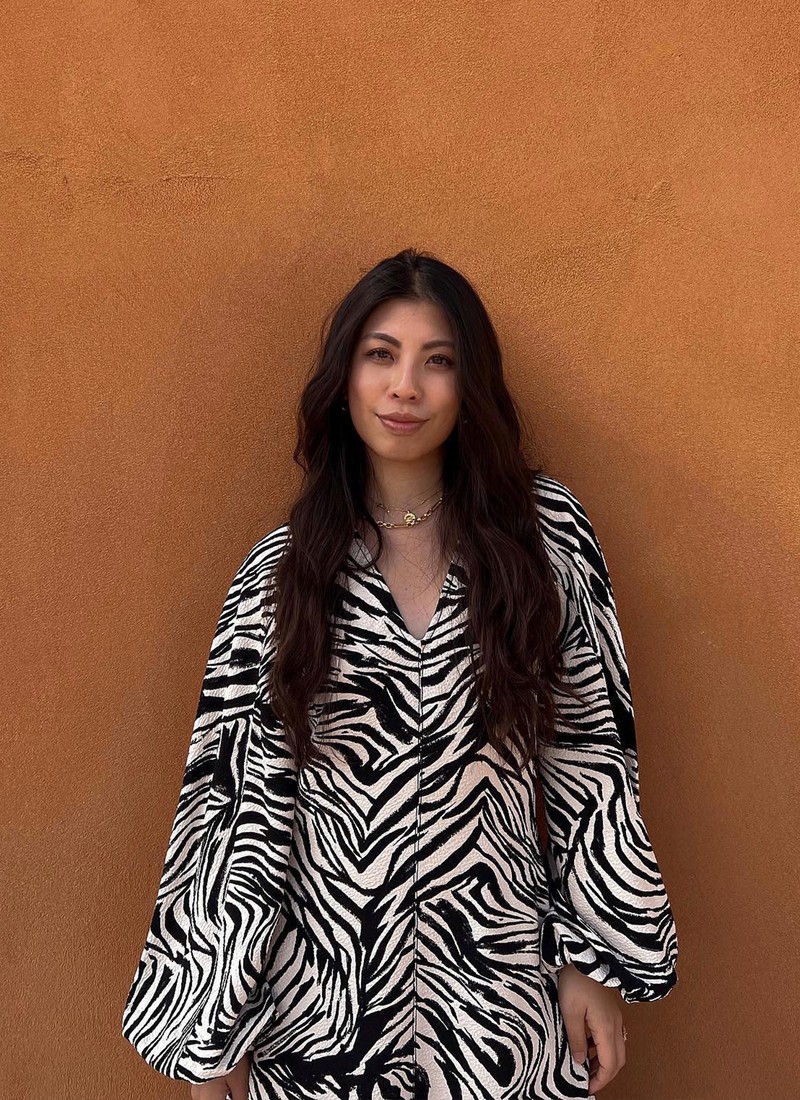

A Freelancer Explains When & How To Take The Plunge
Before going freelance, I was travelling a lot just out of my own personal interest. It was when I started writing for other publications, working with brands and turning my expertise into consumable knowledge that I realised I could start to monetise everything I was already doing on Instagram. I also managed to distil everything I’d learnt into two books – which confirmed my knowledge was valuable to people and that this could be a viable business.
Going freelance was something I thought about for a long time. But it wasn't necessarily something I always wanted to do or fully committed to until recently. As a career trajectory, it’s probably been in the back of my mind for the last seven years or so. But I actually spent most of that time working full time for other companies in influencer partnerships. Suffice it to say I was fully aware that people could make a living from content creation, but it was only in the last year or so that I thought I could do this myself.
I gathered a lot of experience at fashion tech platforms like By Rotation, TikTok and LTK. For most of them, I was working in a partnerships role, essentially helping influencers make money through these platforms. I loved my career, but I just reached a point at the beginning of this year where I was having to say no to my own Instagram opportunities due to the inflexibility of having a full-time job. It felt like if I could ever make my side hustle into my full-time job, then now was probably the time to do it. It was never my long-term plan to do Instagram round the clock – it really was just my hobby and my passion for years – but once I’d saved a bit of money and realised I was making more from one post than I did in a month, I knew it was time to take the leap.
When you go freelance, it’s important to have a safety blanket. Once I realised how much I was making from a single post, I was secure in the knowledge that this could work out. I also spoke to other people who had recently gone freelance or set up as sole traders and they reassured me, saying that even in the worst-case scenario I had the skills and experience to find full-time work again.
One of the first practical steps I took was hiring an accountant. As a freelancer, finances are one of the first things to get on top of and I knew I needed an expert to help me navigate things like HMRC processes. But I also knew there wasn’t going to be headroom to hire a whole team right away – which is where Xero Go comes in. The app has been so helpful in terms of providing my accountant with the right financial data. It also gives me a view of how my freelance business is performing, as I I can see my income and expenses all in one place without me having to track them manually. Then, come tax time, I’m prepared and can share all that information directly with accountant. If I didn’t have something like Xero Go, I’d probably have to spend money hiring an assistant just to get on top of all the admin, since the app is free to use (with the option of paid features) it makes life so easy in that respect. It really cuts out the middleman.
As my business has grown, the Xero Go app has become increasingly more useful. I love how it breaks down everything month by month, so you can see how many invoices you’ve submitted, how many have been paid and how many are outstanding. Prior to going freelance, I wasn't taking on enough bookings to really need that breakdown, but now it’s much more useful and helps me stay on top of various contracts and partnerships. It’s also really good in terms of helping me to think about and forecast my income for the rest of the year.
Looking back, if I could have done anything differently, it would only be to go freelance sooner. I spent a lot of time being afraid and giving in to imposter syndrome, wondering if I could actually do it. Now, I just wish I’d taken the plunge and taken the anxiety a little bit more in my stride. It’s always going to be a little bit scary not knowing how much you’re going to make each month – and that some months might be slower than others – but as long as you always have some savings in the bank, that shouldn’t be as stressful as you think. Financially I always try to think at least three months ahead, lining up enough work so I’m not left with any gaps.
One of the most valuable things I ever did was finding my niche. Influencing and content creation is a very saturated market these days, but travel was always something I was passionate about and there weren’t that many people out there producing the same hotel-based content or being as honest as I was. I’m lucky it was something that I love doing so much. Consistency for an influencer in any vertical is one of the most important factors for success. You have to keep your finger on the pulse all the time, and you have to be producing content all the time. Otherwise you’ll just get left behind.
Authenticity is another key factor. When a brand reaches out, it’s almost an immediate gut reaction. As soon as I get an email, I'm either excited by it or I feel it’s not quite the right fit. If I reply to someone straight away, then that's a good sign. But when I procrastinate or take ages giving someone an answer, it's usually a sign to just say no. There are no hard or fast rules – just a feeling I go off.
I’m very good about maintaining a work/life balance. On a Friday night, I’m disciplined about shutting the laptop and taking time away from emails and screens. Xero Go is really designed to help with that, too. Because it takes care of so much of the admin, I have more free time to enjoy spending time with friends and family at the weekend, instead of pouring over manual admin. During the week, when I’m travelling so much, it’s far easier to snap my receipts on the go, send invoices directly from my phone, monitor my spending in the app and let it keep track of everything for me. It’s so much more efficient.
You must be self-motivated to run your own business. No one's going to do anything for you and nothing will be handed to you – especially at the beginning. You have to create the work and sometimes, if work is a bit slow, you must proactively go after it. You also have to set your own deadlines and be on top of what must get done by when. There are no managers giving you tasks or laying out workflow for you. And if you don’t love what you’re doing, it’s hard to motivate yourself to do all of that for yourself. I suppose a good analogy is being at school versus being at university – the responsibility is all yours.
Xero Go is a fast and easy way for sole traders to stay on top of invoicing and cash flow. Try it here.
DISCLAIMER: We endeavour to always credit the correct original source of every image we use. If you think a credit may be incorrect, please contact us at info@sheerluxe.com.


/https%3A%2F%2Fsheerluxe.com%2Fsites%2Fsheerluxe%2Ffiles%2Farticles%2F2023%2F09%2Fsl-bcf-200923-xero-go-campaignbody-image-3.jpg?itok=lLxddBOd)


